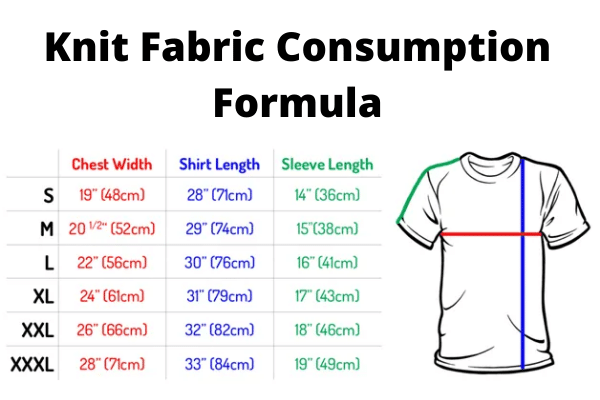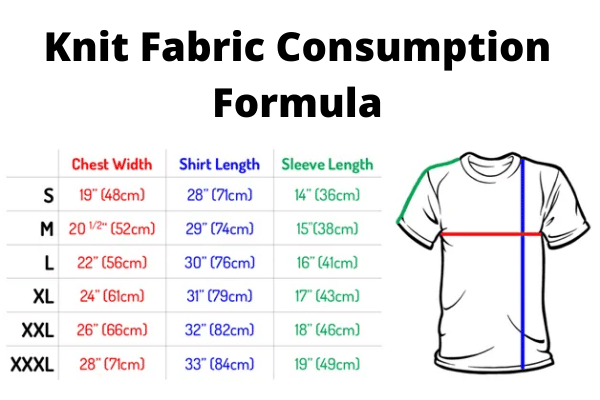Introduction:
Knit fabric consumption refers to the amount of knit fabric required to make a particular garment or product. It is usually expressed in terms of weight, length, or area of fabric required to produce a single garment or a batch of garments. Accurately calculating knit fabric consumption is essential to ensure that enough fabric is ordered for production, minimize fabric waste, and control production costs.
Knit Fabric Consumption Formula is a very important task for garment merchandisers about the clear concept of correct fabric consumption and costs. Because fabric cost bears 40% to 45% of the total cost of any garment.

Fabric Consumption for Knitted T-shirt:
These are some basic function to make consumption of a knitted t-shirt, such as-
- Fabric type and weight (Single jersey 145 GSM)
- Basic measurement (1/2 Chest, Back length, and sleeve length)
- Sewing allowance
- Wastage (Cutting and Sewing- 10%, 15%, etc.)
Suppose,
- Length = 70 cm
- ½ Chest = 60 cm/dia
- Sleeve length = 25 cm
- Arm hole width = 40 cm
- GSM = 145
Formula =

= [( Back length + Sleeve length) × ½ Chest ×2×GSM×12] / 10000000
= [{(70 + 5) + (25 + 5)} × 60 ×2×145×12] / 10000000
= 2.28 kg + 7 %
= 2.28kg + 0.159
= 2.439 kg/doz [Neck and sleeve are made rib so add 0.10]
Factors of Fabric Consumption:
- Marker: Marker has great importance on fabric consumption. When a marker can contain more garments than fabric utilization will be easy.
- Fabric shrinkage: Fabric consumption is directly proportional to fabric shrinkage. If fabric shrinkage is more, then fabric consumption will be needed more.
- Fabric Width: Fabric width is another crucial factor. That has excellent importance during calculating fabric consumption. If fabric width is more, then wastage will be less.
- Repeat size in the fabric: In the case of solid color fabrics, fabric consumption has needed lower than stripes and checks fabric. If the repeat size is large, then fabric consumptions will be needed more and vice-versa.
- Center selvage variation: In case of no center selvage variation in the fabric, the marker will consume less fabric. And in the case of center selvage variation fabric, the marker will consume more fabric.
- Grain: The grain is another important key point for calculating fabric’s consumptions. In the case of straight grain, fewer fabric consumptions are needed and in the case of cross-grain and Bias grain, more fabric consumptions needed.
- Symmetry: For the same style of apparel, the symmetrical fabric has needed lower fabric consumptions than asymmetrical fabric.


Thanks so much